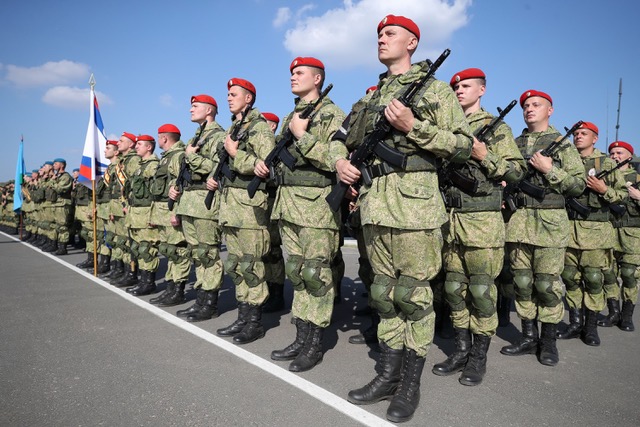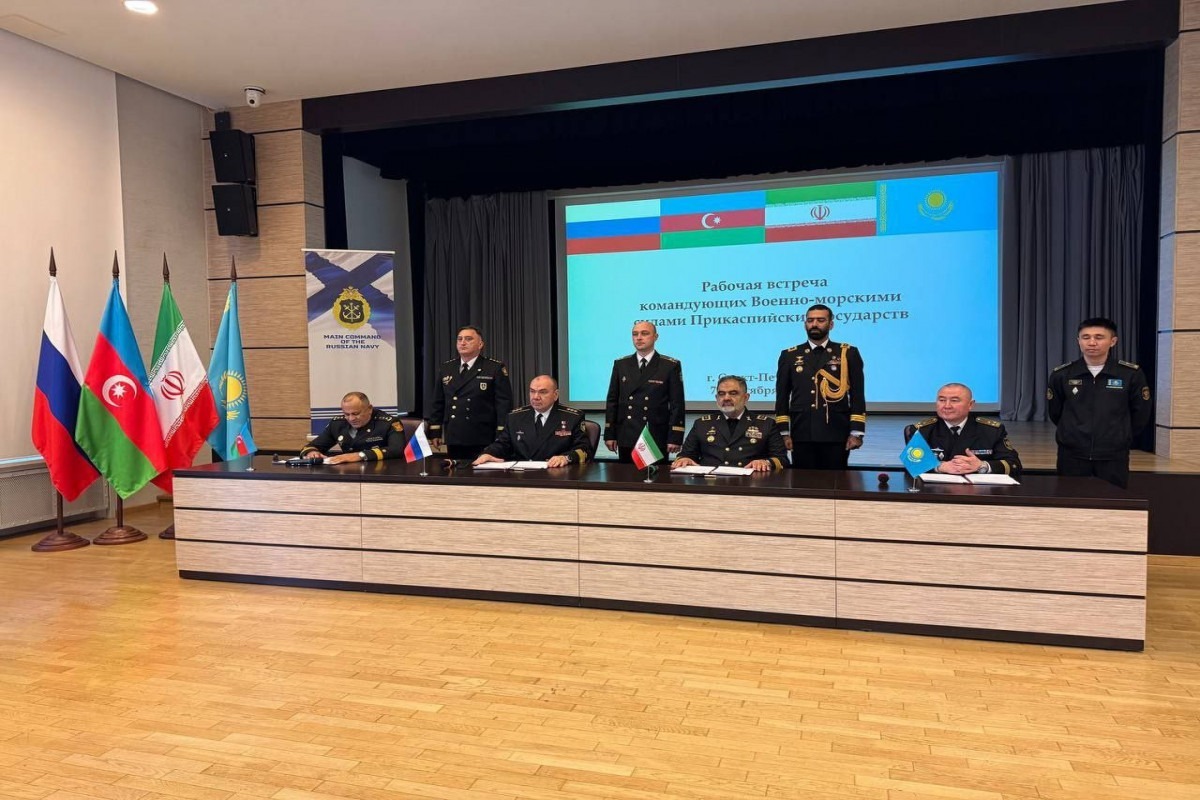
Zapad 2021 Ends Peacefully but East-West Tensions Still Simmer
Zapad 2021 Ends Peacefully but East-West Tensions Still Simmer
The massive, Russo-Belarusian Zapad 2021 operational-strategic war games have ended. The scenario of this year’s iteration of Zapad (September 10–16) envisaged an attack on the Russo-Belarusian Union State by a hostile outside force depicted as the fictitious “Polar Republic.” The invaders were eventually defeated and pushed back. A joint force of Russian paratroopers, armor contingents of the Russian 1st Guards Tank Army and Belarusian units, supported by Russian jets and anti-aircraft missiles, participated in the Zapad 2021 exercises in western Belarus: some 2,500 Russian and 10,300 Belarusian troops plus a token contingent of 50 men from Kazakhstan (see EDM, September 9).
Belarusian strongman Alyaksandr Lukashenka watched a showcase display of wargame pyrotechnics at an army testing ground close to Baranovichi, in the western part of the country. Much of the West has not recognized Lukashenka as Belarus’s legitimate president after the controversial August 9, 2020, elections. And the Lukashenka regime has since been struggling under increasingly punitive sanctions and a virtual Western boycott. Apparently, the Belarusian leader hoped Zapad 2021 could positively thrust his country into the political limelight, demonstrate its military and strategic importance, and break the wall of Western ostracism. Minsk invited observers from North Atlantic Treaty Organization (NATO) member states to Baranovichi to monitor the main Zapad events, but none came. Some observers arrived from China, allies of the Collective Security Treaty Organization (CSTO), members the Commonwealth of Independent States (CIS), and a handful of other countries. Russian President Vladimir Putin was notably absent—as was the Russian top brass. Moscow was represented by a two-star general, Yunus-Bek Yevkurov, the former head of the tiny southern Russian republic of Ingushetia and, now, a second-tier deputy defense minister in charge of battle-readiness training. Under existing regulations, Yevkurov (58) cannot be promoted to a higher rank, because he never graduated from the right military school—the Academy of the General Staff. The Baranovichi snub enraged Lukashenka, who accused NATO countries of deliberately ignoring the invitation: “that is their petty and crazy position.” In any case, according to Lukashenka, NATO members surely observed the grand Zapad 2021 exercises from a distance, using various espionage tools at their disposal: “They are constantly infiltrating and spying in Belarus” (Belta.by, September 12).
While Lukashenka was struggling to assert his relevance in Baranovichi, Putin was overseeing a much more pompous parallel Zapad 2021 main event, over a thousand kilometers eastward, in the garrison and polygon town of Mulino (Nizhny Novgorod Oblast). The highest Russian military leadership was present, together with thousands of soldiers and tanks. Also participating were a Belarusian army battalion and token contingents from Armenia, India, Kazakhstan, Kyrgyzstan and Mongolia; staff officers from Uzbekistan, Pakistan and Sri Lanka; a crowd of international and Russian journalists; as well as some foreign observers (mostly military attachés accredited in Moscow). Military attachés from the North Atlantic Alliance countries were equally eager to come to Mulino as observers. A Moscow-based diplomatic source told this author that, on September 3, 2021, Western embassies in Moscow received a preliminary invite to prepare to go to Mulino, but it was soon withdrawn as “a mistake.” Not a single NATO member state representative was, thus, invited to Mulino—only envoys from formally neutral European countries: Austria, Serbia, Finland, Sweden and Switzerland (Interfax, September 13).
After the Mulino wargame demonstration—complete with plenty of pyrotechnic displays—Putin went into total isolation because “several dozen persons in his personal entourage” tested positive for COVID-19 (all were previously vaccinated). As a result, the Kremlin leader is presently ruling Russia and meeting people only remotely, while the troops are being redeployed to their home bases (TASS, September 16). According to the Russian Ministry of Defense, some 200,000 soldiers took part in Zapad 2021. The official number of heavy equipment involved is less impressive: 760 pieces of heavy weaponry, 15 ships and some 80 aircraft. In March and April of 2021, the Russian Armed Forces were fully mobilized in a so-called test of “battle readiness,” concentrating in large numbers near the Ukrainian border. Russia’s first deputy defense minister and chief of the General Staff, Army General Valery Gerasimov, told journalists then that over 300,000 men, 35,000 pieces of heavy weaponry, 180 ships and around 900 aircraft were deployed in the spring test of “battle readiness” (Militarynews.ru, April 29). Gerasimov’s numbers do not seem to fully add up: The numbers of different heavy equipment listed are too large compared to the number of men supposedly mobilized; and these figures are actually 10–20 times higher than the numbers officially announced for Zapad 2021. It could be that, in April, there were many thousands or tens of thousands of men not officially included in the number “over 300,000” (Novaya Gazeta, September 14).
The massive March–April “battle readiness” test occurred with no prior warning; no foreign military or other observers were invited; and the entire incident was scantly reported by the Russian press. The Zapad 2021 exercises, on the other hand, (though smaller in scope than the “battle readiness” test) were announced a year in advance, with extensive press tours organized for Western and other media. Still, Western military observers were deliberately barred from attending the fireworks display in Mulino, in Putin’s presence, on September 12, in clear violation of the Organization for Security and Cooperation in Europe’s (OSCE) Vienna document on confidence- and security-building measures. A Western diplomatic source in Moscow told this author that this deliberate public snub is a highly ominous sign of how badly relations have deteriorated. Today, as during the height of the Cold War, Moscow and the West seem like mortal enemies balancing on the verge of war.
Tatyana Shevtsova, the Russian deputy defense minister in charge of finances, announced the testing during Zapad 2021of an “innovative” scheme of wartime troop financing through field offices of the state treasury, the Bank of Russia and commercial bank outlets. This system is intended to provide troops deployed in the field during wartime with money, “including rubles and foreign currency” (Militarynews.ru, August 9). Shevtsova did not spell out which foreign currencies would be provided. It might depend on where Russian soldiers intend to go: euros or dollars, Polish złoty or Norwegian kroner, Ukrainian hryvna or Belarusian rubles. The fact that such a scheme was tested during these massive war games is another ominous sign. Those announced preparations for wartime foreign currency payments to Russian troops presumably operating deep in enemy territory could be part of a deliberate attempt to scare Westerners into accepting Russia’s military dominance and geopolitical ambitions.


